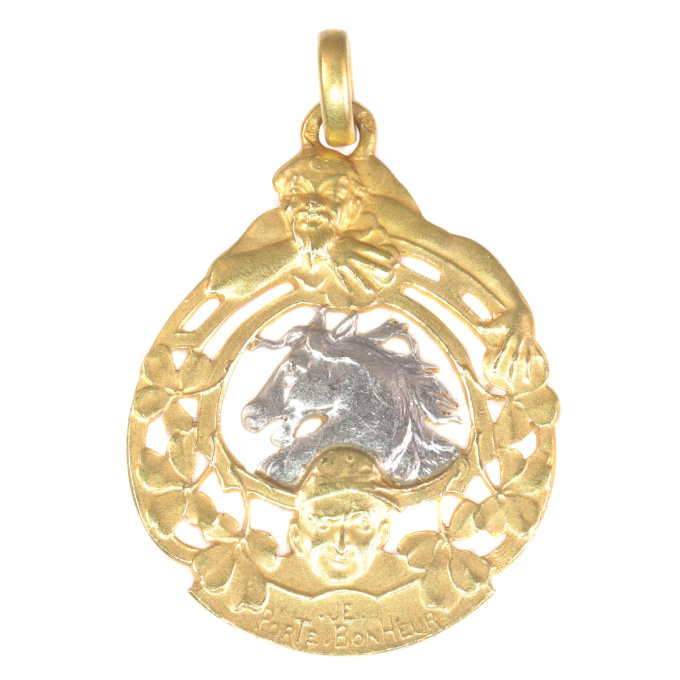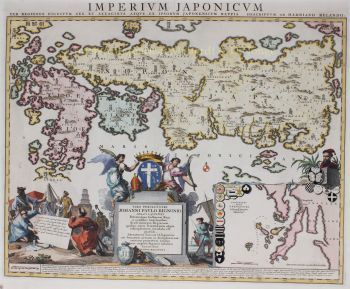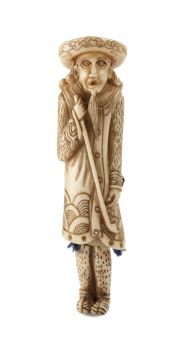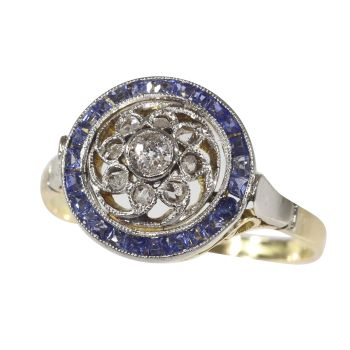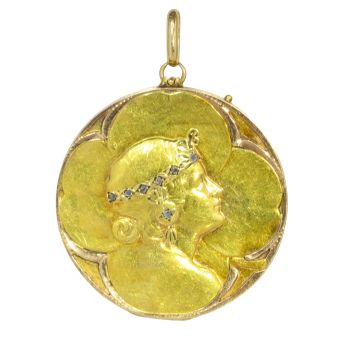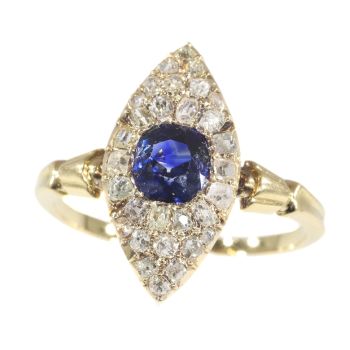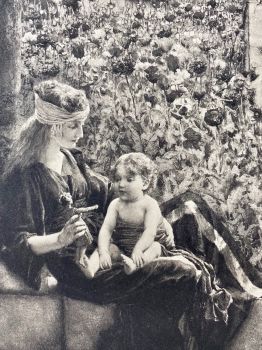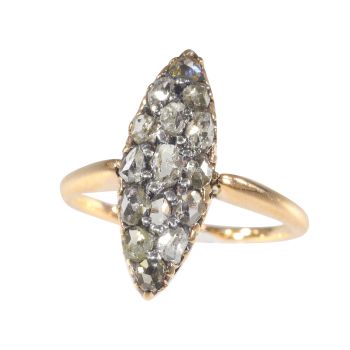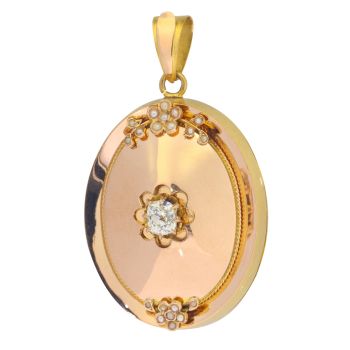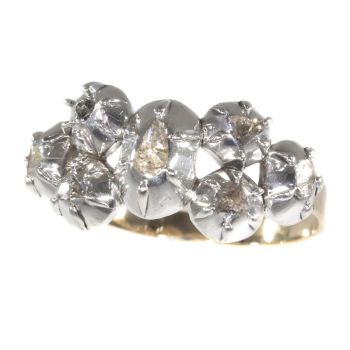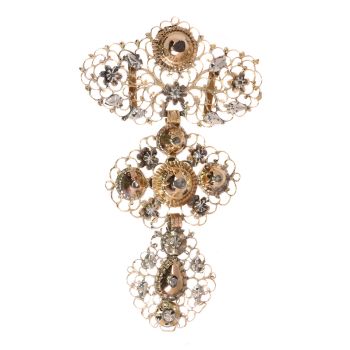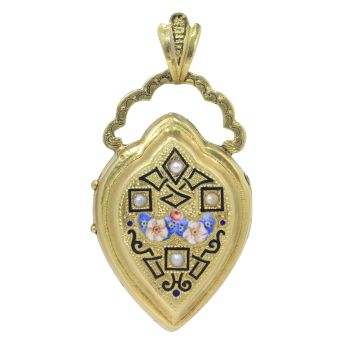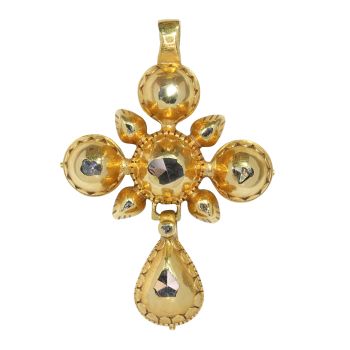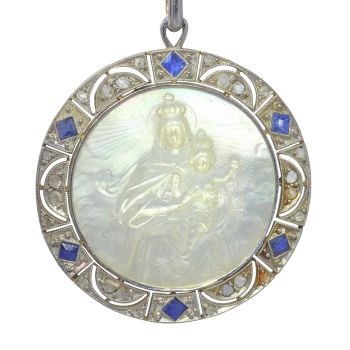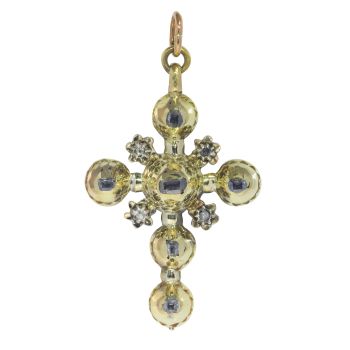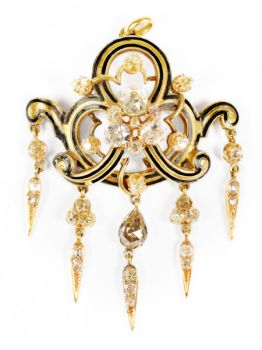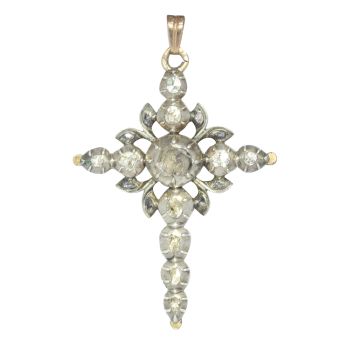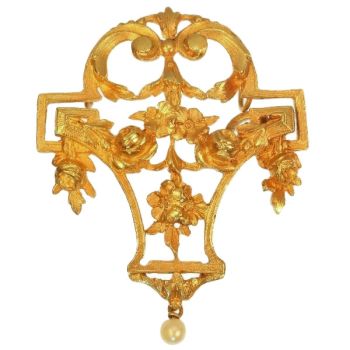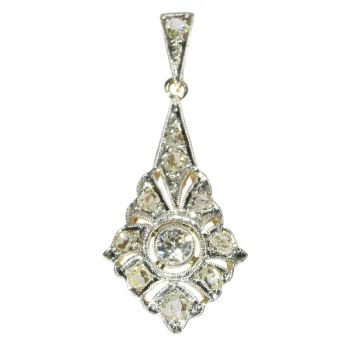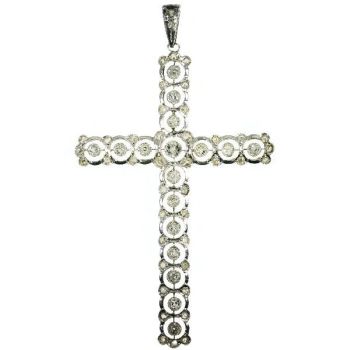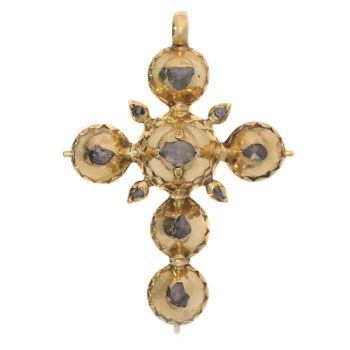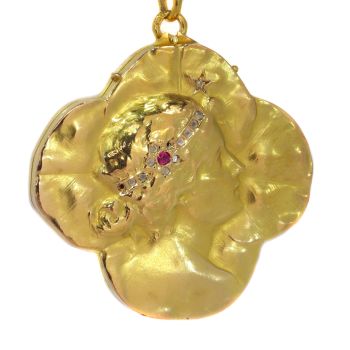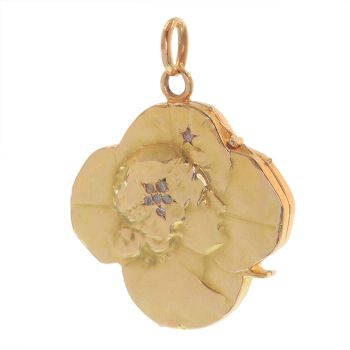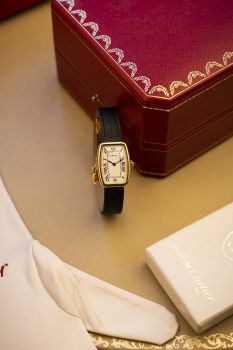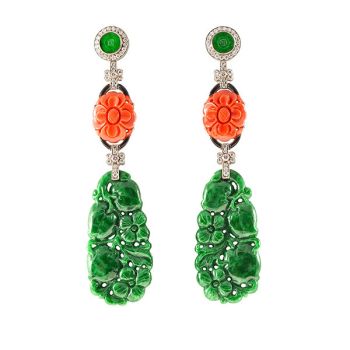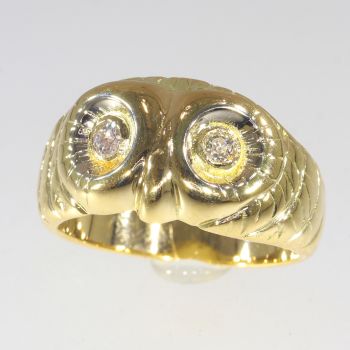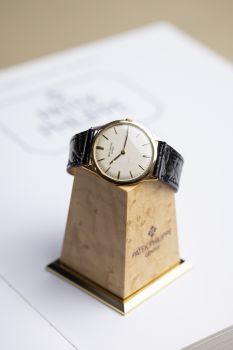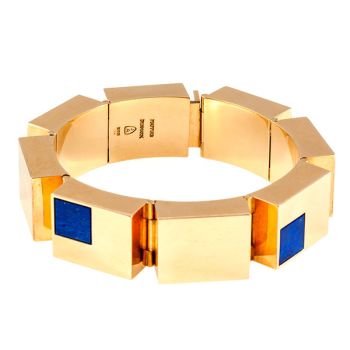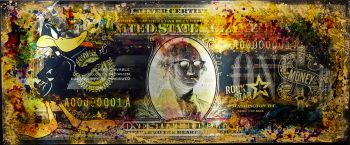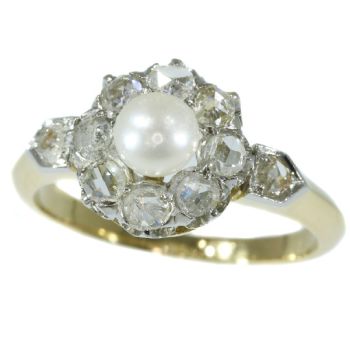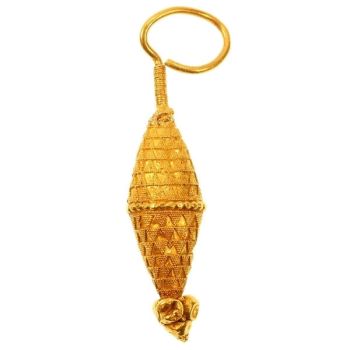Antico portafortuna in oro francese, gettone portafortuna per le corse dei cavalli 1900
Artista Sconosciuto
Oro
Attualmente non disponibile tramite Gallerease
- A proposito di opere d'arte
Antique jewelry object group: pendant (pictured chain is not included)
Condition: very good condition
- (more info on our condition scale)
Country of origin: France
Style: Late-Victorian - Victorian decorative arts refers to the style of decorative arts during the Victorian era. The Victorian era is known for its eclectic revival and interpretation of historic styles and the introduction of cross-cultural influences from the middle east and Asia in furniture, fittings, and Interior decoration.
Victorian design is widely viewed as having indulged in a regrettable excess of ornament. The Arts and Crafts movement, the aesthetic movement, Anglo-Japanese style, and Art Nouveau style have their beginnings in the late Victorian era.
- See also: late-Victorianor more info on styles
Style specifics: The Late or Aesthetic Victorian Period - Experts divide the reign of Queen Victoria, also called The Victorian era (1837-1901) into three periods of about twenty years each; The Romantic Victorian Period (1837 - 1860), The Grand Victorian Period(1860 - 1880), and the Late or Aesthetic Victorian Period (1880 - 1901).
We consider this to be of The Late or Aesthetic Victorian Period.
Jewelry of this period is changing back from heavy to more smaller, romantic pieces with often whimsical motifs. Jewelers using diamonds and bright gemstones in elaborated and fine feminine pieces.
Period: ca. 1900
- (events & facts of this era, poetry of this era, fashion of this era)
Source of inspiration: Good luck tokens
Theme: The central horse head (most likely made in platinum) is surrounded by four leaf clovers, two men (who could be "lucky devils"?) and a text saying: "Je porte bonheur" which is French for "I bring good luck".
Material: platinum and 18K yellow gold (touchstone tested)
- (more info on precious metals)
Extra information: Four leaf clover - The clover became famous around 1,600 years ago, because, it was said that Saint Patrick in 452 AD stepped from the cathedral in Ireland on Easter morning, stooped down and picked a shamrock. He showed it to the crowd of parishioners, and then said, "This Plant represents the Father, the Son and the Holy Spirit!" Since that time, the three leaf shamrock has become world famous! Around this time when clovers were made popular, the rare four-leaf clover also became popular and wasconsidered to be lucky.
Hallmarks: The French control mark for 18K gold representing a horse's head that was in use in France from about 1838.
- (more info on hallmarks)
Dimensions: height 3,50 cm (1,38 inch) - See picture with a ruler in cm and inches
Weight: 8,40 gram (5,40 dwt)
Reference Nº: 19254-0139
Copyright photography: Adin, fine antique jewelry
- A proposito di opere artista
Può succedere che un artista o un creatore sia sconosciuto.
Alcune opere non sono determinate da chi sono state realizzate o sono state realizzate da (un gruppo di) artigiani. Esempi sono statue dell'antichità, mobili, specchi o firme non chiare o leggibili ma anche alcune opere non sono affatto firmate.
Inoltre puoi trovare la seguente descrizione:
•"Attribuito a …." A loro avviso probabilmente opera dell'artista, almeno in parte
•“Studio di ….” o “Officina di” A loro avviso un'opera eseguita nello studio o nella bottega dell'artista, eventualmente sotto la sua supervisione
•“Cerchio di…” A loro avviso un'opera del periodo dell'artista che mostra la sua influenza, strettamente legata all'artista ma non necessariamente al suo allievo
•"Stile di..." o "Seguace di..." A loro avviso un'opera eseguita nello stile dell'artista ma non necessariamente da un allievo; può essere contemporaneo o quasi contemporaneo
•“Modalità di…” A loro avviso un'opera nello stile dell'artista ma di epoca successiva
•"Dopo …." A loro avviso una copia (di qualsiasi data) di un'opera dell'artista
•“Firmato…”, “Datato…” o “Iscritto” A loro avviso l'opera è stata firmata/datata/inscritta dall'artista. L'aggiunta di un punto interrogativo indica un elemento di dubbio
•"Con firma....", "Con data...", "Con iscrizione..." o “Riporta firma/data/iscrizione” a loro avviso la firma/data/iscrizione è stata aggiunta da qualcuno diverso dall'artista
Artwork details
Related artworks
- 1 - 4 / 12
- 1 - 4 / 24
- 1 - 4 / 24
- 1 - 4 / 6
Onbekende Kunstenaar
Antieke Saffier Broche sleutel1920
Prijs op aanvraagAnita Potters Juwelier Antiquair
1 - 4 / 24


